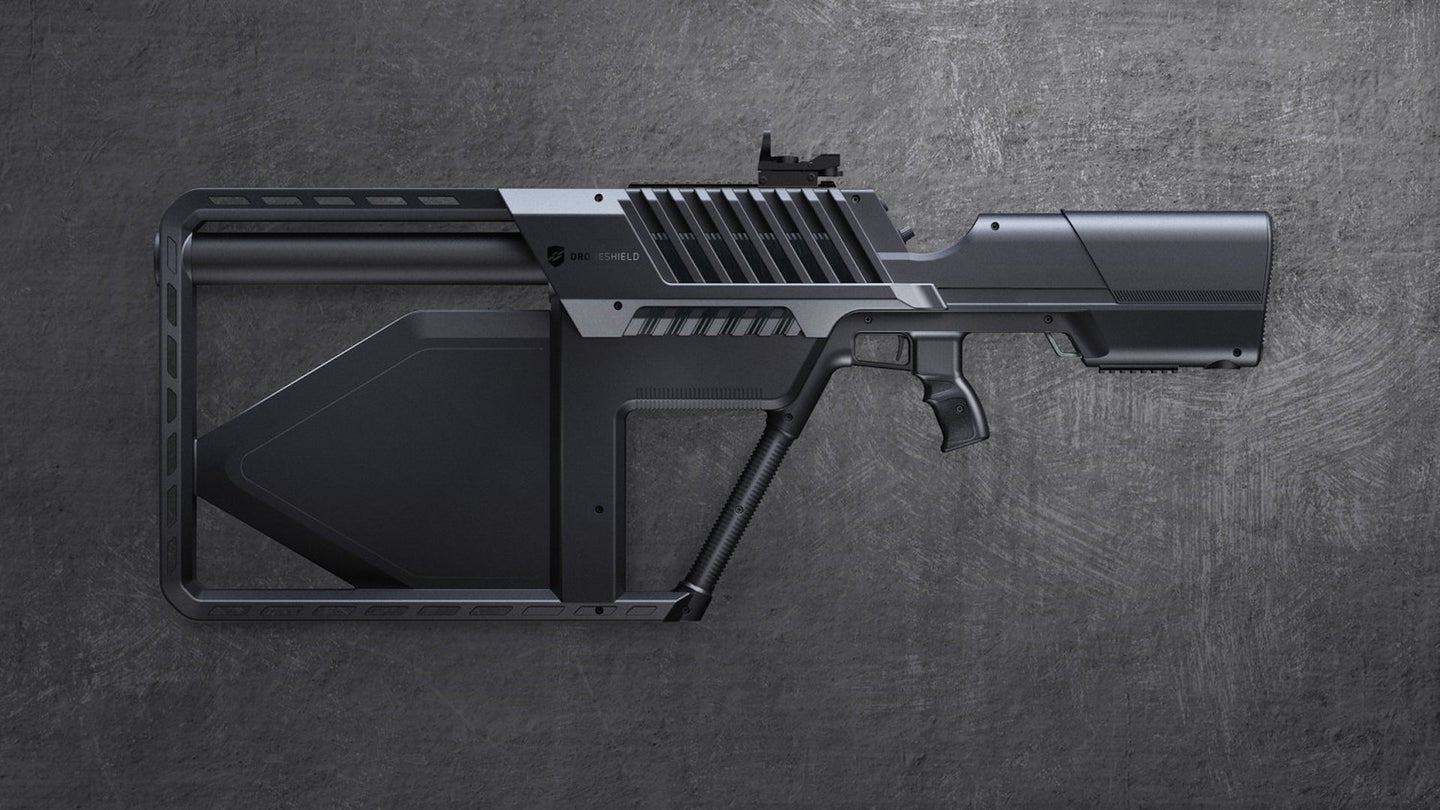DroneGun Tactical is Your New and Improved Portable Drone Downer
The DroneGun Tactical is more ergonomic, portable, and effective than its predecessor – well, mostly. Let’s take a look inside.

DroneShield’s new ‘DroneGun Tactical’ is a refined, more portable version of its predecessor, 2017’s ‘DroneGun MKII.' This upgraded anti-drone gun—capable of downing an unmanned aerial vehicle (UAV) from over half a mile—has a few considerable improvements in its corner. On the other hand, this thing isn’t even legal in the United States if you’re a regular civilian, so there are definite pros and cons to consumer appeal, here. However, the fine-tuning that took place between models is definitely impressive; the Tactical is more portable, technologically capable, and seems ergonomically superior. Let’s get into it.
If you’ve read our anti-drone gun reporting before, you’re well aware of the process. While some drone guns shoot actual ballistics in hopes of damaging any unwelcome aerial visitors, most modern anti-drone guns use signal-jamming frequencies to confuse the incoming UAV. When a drone’s radio signals are interrupted or continuously jammed, the UAV either lands as a precautionary measure or returns back to its origin. Either way, the goal has been accomplished—your drone gun got rid of the intruder. But how does it look, and feel?
While the dimensions themselves (41” length by 16.3” height by 4.8” width) may not impress you, the aesthetic certainly will. The Tactical appears like something right out of Paul Verhoeven film, or classic first-person shooter Doom. The futurism on display here isn’t relegated to the visuals alone, either, as this drone-downer packs quite the sophisticated punch in its innards, as well. According to DroneShield’s press release, while the new model retains the same 2.4Ghz/5.8Ghz ISM antennae, there is now an added GNSS antenna boasting 433MHz and 915 MHz frequencies, an intuitive user interface, and a seemingly far more ergonomic grip for better, more functional use. If there’s a drone that requires higher targeting, there’s even a secondary angled grip that allows users to wield the Tactical more practically.
It seems DroneShield has been quite aware that carrying and lifting their product would have to be one of the more important areas of focus and refinement, though the Tactical still weighs a hefty 15 pounds. Of course, the battle between portability and sophisticated tech implementation is never easy, and one or the other usually wins out. The Tactical, however, seems to strike an elegant compromise. Sure, 15 pounds isn’t as light as a smartphone, but those attempting to shoot drones out of the sky are probably used to lifting a few heavy items from time to time. Added to that, the perfect model takes time to reach, in all forward-facing fields of technology. The important thing is for each subsequent model to better than the last one, and the Tactical certainly appears to be.
The negatives here could summarily be listed as a shorter range—the MKII’s jamming capabilities reached up to 1.2 miles, in contrast to the Tactical’s 0.5-miles-and-unspecified-change—and the fact that there’s no FCC approval to use this jamming gun as a regular civilian. Ultimately, DroneShield’s new product is for those already sure about their need of any potential anti-drone tech. As a city-dweller who doesn’t have any land to protect from surveillance or general aerial intrusion, this doesn’t really pertain to me. On the other hand, it’s impressive how rapidly anti-drone tech is growing, in lock-step with every technological leap that drones take themselves.
